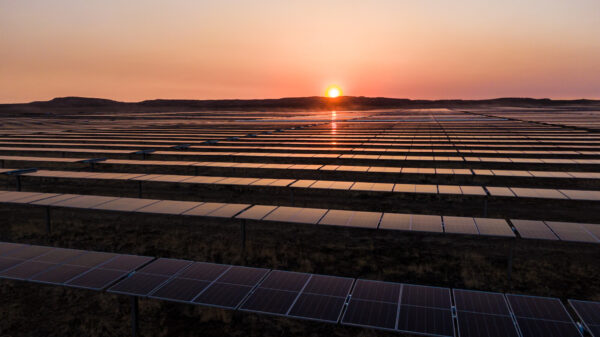Zimplats, Zimbabwe’s leading platinum group metals (PGMs) producer, is making significant strides toward sustainability with its 35-megawatt solar farm at the Selous Metallurgical Complex.
By Ryan Chigoche
This project marks the first phase of a larger 185 MW solar initiative, valued at US$201 million. With power supply being a critical concern for mining companies—who lost up to 17 hours of production daily due to load shedding—the new solar facility aims to alleviate some of these challenges. Although recent additions like the Hwange power plant have eased the crisis, demand still outpaces supply as mining operations expand and new projects emerge.
The initial phase of the solar plant will cost US$37 million out of the total US$201 million, with full completion expected by 2027. Here is a brief overview of the key components and technologies involved in this advanced solar facility.
Core System and Infrastructure
The solar plant’s backbone is its SCADA (Supervisory Control and Data Acquisition) system, which oversees and manages the plant’s operations to ensure efficiency and smooth functioning. Complementing this, the switchgear features protection facilities that safeguard the equipment from potential damage.
The power generated at the plant is stepped up from 33 kV to 132 kV by a transformer, enabling long-distance transmission and integration into the national grid.
Design and Terrain Adaptation
The Selous site presents unique challenges due to its undulating terrain. To address this, solar panels are oriented north-south to maximize solar exposure. Accurate topographical surveys ensure that panels are installed at optimal angles and elevations to capture the maximum amount of sunlight.
Tracking Technology
The plant utilizes a single-axis tracking system to enhance energy generation. This technology allows the panels to rotate and follow the sun from sunrise to sunset, optimizing power production throughout the day. Although dual-axis tracking systems—which adjust both horizontally and vertically—could offer additional efficiency, they are more expensive and less practical for this project.
Energy Storage and Technological Advancements
The plant’s design incorporates energy storage solutions to maintain power generation during periods of low sunlight. Zimplats is also monitoring advancements in battery technology to evaluate its economic viability for future projects.
Solar technology is rapidly evolving. Initially, the panels used in this project produced 550 watts per panel, but newer models now offer up to 640 watts per panel. Despite the availability of panels exceeding 750 watts, Zimplats is adopting a cautious approach to ensure reliability and performance.
Construction and Local Impact
The installation process involved over 10,000 stanchions, each designed and positioned based on geotechnical conditions. Hydraulic machines were used to secure these stanchions, some extending up to 2.5 meters into the ground. Computer-aided modeling was employed to ensure precise placement and stability.
Significantly, all contractors working on the solar plant are local, reflecting Zimplats’ commitment to social responsibility and community support.
Benefits and Future Outlook
As a utility-scale facility, the solar plant is expected to offer numerous benefits, including feeding excess power into the national grid during the night and contributing to grid stability. This project underscores Zimplats’ dedication to sustainability and innovation in the energy sector.
The Zimplats solar plant represents a major technological and environmental milestone, setting a precedent for future renewable energy projects in the region. As Zimplats continues to explore advancements in solar technology and energy storage, it remains at the forefront of sustainable industrial practices.
This solar initiative is part of Zimplats’ broader US$1.8 billion expansion plan, which includes the development and upgrade of two new mines.
According to Zimplats Managing Director Stanley Segula, the company is currently in the process of finalizing the construction of this 35-megawatt solar plant, which will eventually expand to 185 megawatts in the second phase.
.png)




